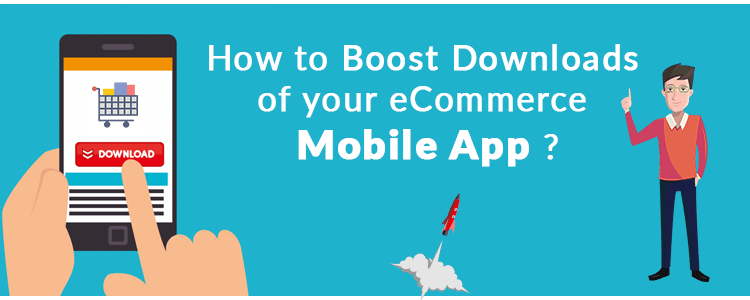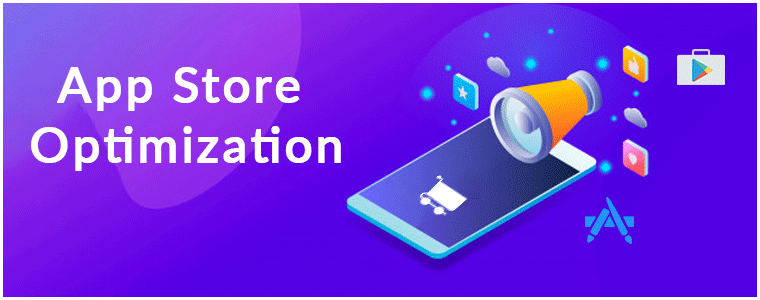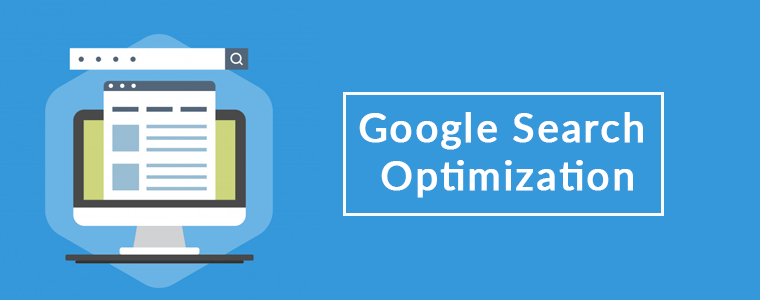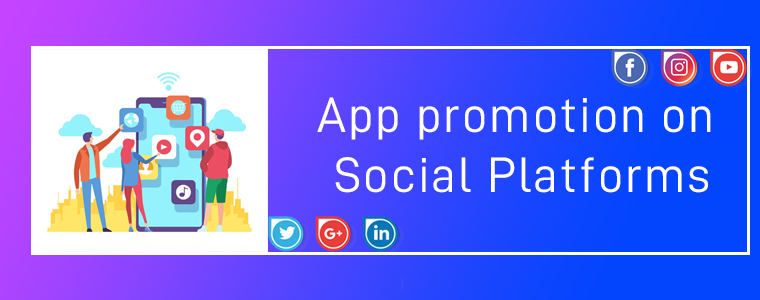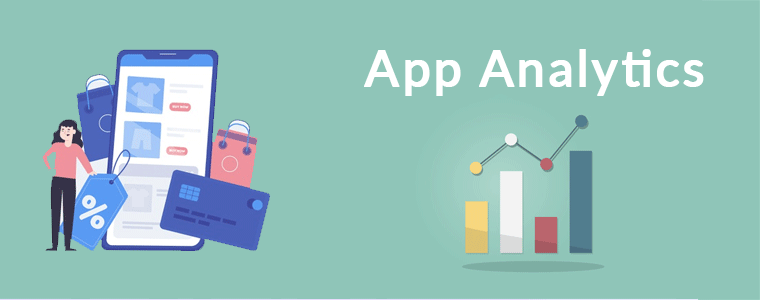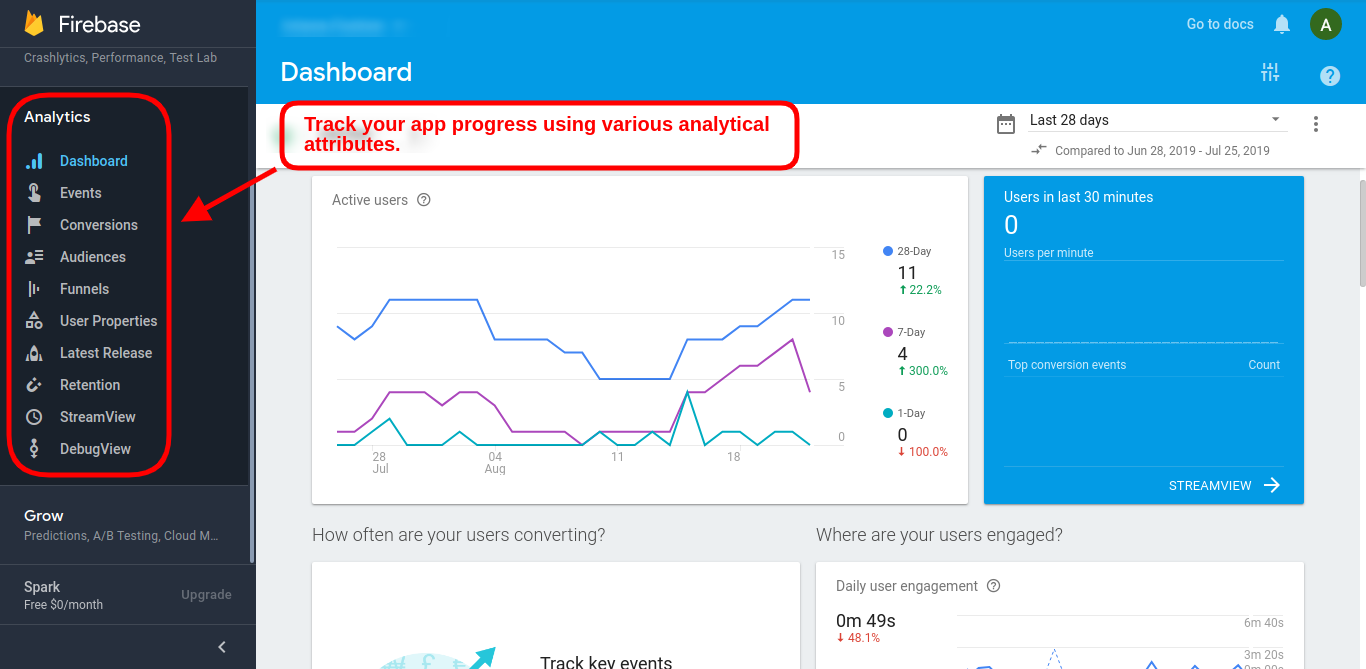Successfully launched an eCommerce Mobile App & start selling products on shopping apps along with the website. Now, what’s next?
Getting your native Android & iOS shopping app to overcrowded Google Play Store & Apple App Store is just the beginning in the world of mobile commerce. There is much more beyond from here. Being an eCommerce merchant, now two options left for you. One is to wait & let the users discover about your app on their own and the other one is to do something about it & promote the app in the right manner. The later one can be a game-changer for you.
Nowadays, the majority of developers are facing the problem of fewer downloads, after the app is published on App stores. The eCommerce industry itself has huge competition and is growing with each passing day. To get expected downloads will require some efforts & understanding from you. Before getting into that detailing first, let’s discuss how marketing exactly works in the world of mobile apps.
You probably would be aware of the term ASO (App Store Optimization) which is responsible for ranking/position of your app in app stores. App stores have their own ranking criteria which are quite similar to search engine rankings algorithms. Let’s know more about ASO:
#1 App Store Optimization
ASO works like SEO. It handles the ranking of apps in app store search results. This fact is quite obvious that the better ranking of your app will rise both visits & downloads. Developers should optimize the right keywords for the app to make it rank higher in search results. Here are some checklist points for this technique:
1. App Title:
The name of a mobile app plays a vital role in its success. You should go for some catchy yet descriptive title without missing the core value of the brand. Always remember that the name will have an everlasting impression on users. Before finalizing the app name, you should always have a look at the name of your competitor apps. And, the keyword with the highest search volume should be used in the app name.
Apple App Store provides 255 characters to write a title. Whereas, Google Play Store has lowered title limit to 30 char & allows putting keywords in the description instead of the name.
2. Keywords/Tags:
Choose the right keyword for your app & use them in the tags/keywords field of app listing. Apple store allows 100 char limit to insert keywords while the Google Play store allows to add them the long description of 4000 characters.
Just like SEO, keywords will only be beneficial if they are well-suited & match your business domain. So, do proper keyword research & analysis & sneak into some competitor as well if required. It would not harm.
Also, there should be a check on keyword performance as well. If they aren’t able to give downloads after some time, it’s a signal to update them.
2. App Description:
The description for the app plays the same role as a landing page for a website. Description could be a compelling factor for the user reading it to end up with app installation. Both Google Play & Apple App store offers 4000 char description to put them wherever you like.
You should write the description with the thought-process that user isn’t aware of the app at all. For an eCommerce store, the app would have no download charges yet users hesitate to download it for free, why? That’s where your description plays its role to impact their decision.
Try to list down all the features & benefits with proper keywords to make the most out of it. For the visual part, make sure the screenshots are appealing and have relevant information. For instance, take a look at how clear & self-explanatory screenshots are of Barcode To Sheet mobile app. The interactive app preview video gives complete info in just 2 minutes.
4. App Downloads:
You should always keep a track of the downloads of your app. It should always keep increasing. The more downloads you will get the higher ranking you will get. Even, the app store also shows the visitors ranking of the tops app In their respective category which majorly depends on the app downloads.
Somehow, if your app is lacking downloads in the initial launch phase, you can even try some third-party promotion to get a rise. The downloads depict the authenticity of your app & help in ranking as well.
5. App Ratings & Reviews:
Being in the retail industry, you would be aware of the potential of ratings & reviews. That works for your app as well. Keep your user reviews positive & ratings higher for better ranking.
Launching a beta version of your app is a way to make sure that it is user-friendly & match expectations. You can even get happy & satisfied reviews from the beginning. In order to simplify this task, try to get fully genuine & real reviews.
Also Read:
The Mobile App Effect in eCommerce Industry during Holiday Season
Tips to create app icon for your eCommerce app
#2 Google Search Optimization:
Yes, Google search it is. You can use it to rank the app in Google searches & get it installed in the user’s devices. The process is quite simple, you just need to optimize app listing page & link it to your website.
1. Interlink Store & Apps:
There should be a proper interlinking between store & app listings. Keep the brand name in app title & description which should have a back-link to your website.
Also, highlight app links on your website homepage for better usability & increased downloads.
2. Allow App Indexing:
Indexing signals Google Bot to crawl the content of a specific web-page. Make sure that indexing is allowed for your app listing page as well.
This will let crawlers go through app description & keywords which will ultimately help in Google ranking of apps. You should even keep an eye on the content of app web-page & update it from time to time.
Actually indexing of application is slightly different from the web-pages. Along with app description, the content available on app screens can also be brought to crawling with deep linking app indexing & firebase app indexing.
3. QR code for App Install:
Display compressed QR codes on your website & let users land straightly to app download option on scanning. This not only improves usability, but also it is a future trend which could affect rankings in coming time.
These QR codes on the home page of the website will grab the user’s attention & straightly lead them to apps for better browsing & hassle-free purchase. Click here to create a low-density QR code.
#3 App Promotion on Social Platforms
As far as eCommerce mobile apps are concerned, social media networks are an effective channel for promotion. You can increase the visibility of your app & get potential no of downloads from there.
Majorly there are two ways to do that. One is to promote the app through your social business profiles on Facebook, Twitter, Instagram, etc. Another one is to run Facebook ads for your app.
Also Read: Social media strategies to take your business next level.
#3 App Analytics
Often it happens that developers focus is just on the download numbers. It’s good, but there should be a check on the user’s behavior & app performance as well. Your app will be uninstalled from user’s devices whenever they face any sort of abnormal behavior.
You can use Google’s Firebase Analytics to learn more about user’s demands in real-time & plan on how to deliver them accordingly.
Similarly, the Apple store has also its analytics tool with App Analytics which also used to measure performance & set new goals. The Google Firebase tracking can also be added in Google Analytics in order to keep a check on app performance & growth.
#4 Press Releases for App Launch
Before launching an eCommerce Mobile App for the online store, you should release a press release on different digital media networks as an announcement. This campaign will voice out about future app presence & get initial downloads in beta version as well.
The developers can even go to influencers & reviewers to get genuine feedback/review for their apps. The reviews get published on multiple websites which grabs user attention with a quality back-link to your app listing web-page. This approach has worked for various leading names when it comes to increasing downloads.
A pre-launch campaign can gain exposure for your app. Pre-announcement about ongoing app development & will be available soon is the best thing to do instead of just waiting for launch day. A blog post about development updates maybe even published for better interaction with users. It will help in building eagerness in users regarding your app.
For all the eCommerce merchants out there, if you haven’t taken your store to the mobile platform & start generating heavy leads, here is the most advanced & automated Mobile App Builder plugin available for all major platforms. Check them out:
PrestaShop Mobile App Builder
OpenCart Mobile App Builder
Magento Mobile App Builder
Magento 2 Mobile App Builder
WooCommerce Mobile App Builder
Final Comments:
The answer to successful app downloads lies in the preliminary strategies we choose. The above-discussed tips will be a booster for your app downloads, but you can also opt for any other technique as well if it works for you. In the wide eCommerce industry, multiple domains have a variable audience, so there isn’t any foolproof way to get numbers. But, yeah these points have worked for a majority of developers in the past & would hopefully bring recognition & downloads for your app as well.

